Significant people
| | This section is empty. You can help by adding to it. (March 2016) |
| Millennium |
|---|
| 1st millennium |
| Centuries |
| Decades |
| Years |
| Categories |
The 300s decade ran from January 1, 300, to December 31, 309.
In Yamato (Japan), the Kofun period dominated during this decade. It was an animistic culture which existed prior the introduction of Buddhism. A legend of the 4th century Prince Yamato Takeru alludes to the borders of the Yamato and battlegrounds in the area. A frontier was obviously somewhere close to the later Izumo province (the eastern part of today's Shimane Prefecture). Another frontier, in Kyūshū, was apparently somewhere north of today's Kumamoto prefecture. The legend specifically states that there was an eastern land in Honshū "whose people disobeyed the imperial court", against whom Yamato Takeru was sent to fight. That rivalling country may have been located rather close to the Yamato nucleus area itself, or relatively far away. The today Kai province is mentioned as one of the locations where prince Yamato Takeru sojourned in his said military expedition.
Northern frontier of this age was also explained in Kojiki as the legend of Shido Shōgun's (四道将軍: Shōguns to four ways) expedition. Out of four shōguns, Ōbiko set northward to Koshi and his son Take Nunakawawake set to eastern states. The father moved east from northern Koshi while the son moved north on his way, and they finally met at Aizu (current western Fukushima). Although the legend itself is not likely to be a historical fact, Aizu is rather close to southern Tōhoku, where the north end of keyhole kofun culture as of late 4th century is located.
| | This section is empty. You can help by adding to it. (March 2016) |
300
301
302
303
305
306
307
308
309
300
301
302
303

304


305
306

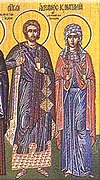
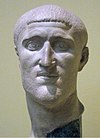

307

308
309
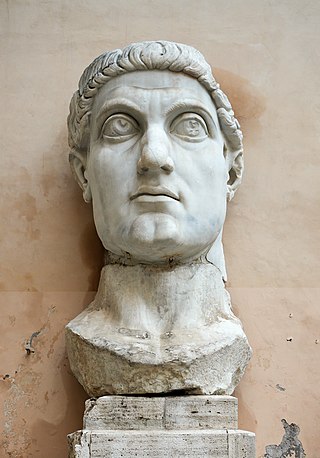
Constantine I, also known as Constantine the Great, was Roman emperor from AD 306 to 337. He was the first emperor to convert to Christianity. Born in Naissus, Dacia Mediterranea, he was the son of Flavius Constantius, a Roman army officer of Illyrian origin who had been one of the four rulers of the Tetrarchy. His mother, Helena, was a Greek woman of low birth and a Christian. Later canonized as a saint, she is traditionally attributed with the conversion of her son. Constantine served with distinction under the Roman emperors Diocletian and Galerius. He began his career by campaigning in the eastern provinces before being recalled in the west to fight alongside his father in the province of Britannia. After his father's death in 306, Constantine was acclaimed as augustus (emperor) by his army at Eboracum. He eventually emerged victorious in the civil wars against emperors Maxentius and Licinius to become the sole ruler of the Roman Empire by 324.

The Tetrarchy was the system instituted by Roman emperor Diocletian in 293 AD to govern the ancient Roman Empire by dividing it between two emperors, the augusti, and their junior colleagues and designated successors, the caesares.
The 310s decade ran from January 1, 310, to December 31, 319.
Year 305 (CCCV) was a common year starting on Monday of the Julian calendar. At the time, it was known as the Year of the Consulship of Constantius and Valerius. The denomination 305 for this year has been used since the early medieval period, when the Anno Domini calendar era became the prevalent method in Europe for naming years.
The 290s decade ran from January 1, 290, to December 31, 299.
The 280's decade ran from January 1, 280, to December 31, 289.

Year 303 (CCCIII) was a common year starting on Friday of the Julian calendar. It was known in the Roman Empire as the Year of the Consulship of Diocletian and Maximian. The denomination 303 for this year has been used since the early medieval period, when the Anno Domini calendar era became the prevalent method in Europe for naming years.

Year 304 (CCCIV) was a leap year starting on Saturday of the Julian calendar. It was known in the Roman Empire as the Year of the Consulship of Diocletian and Maximian. The denomination 304 for this year has been used since the early medieval period, when the Anno Domini calendar era became the prevalent method in Europe for naming years.
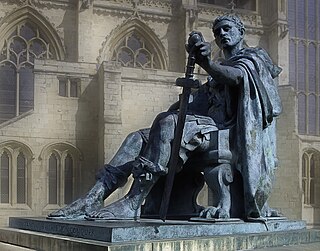
Year 306 (CCCVI) was a common year starting on Tuesday of the Julian calendar. At the time, it was known as the Year of the Consulship of Constantius and Valerius. The denomination 306 for this year has been used since the early medieval period, when the Anno Domini calendar era became the prevalent method in Europe for naming years.

Year 308 (CCCVIII) was a leap year starting on Thursday of the Julian calendar. It was known in the Roman Empire as the Year of the Consulship of Diocletian and (Galerius) Maximianus. The denomination 308 for this year has been used since the early medieval period, when the Anno Domini calendar era became the prevalent method in Europe for naming years.

Year 307 (CCCVII) was a common year starting on Wednesday of the Julian calendar. At the time, it was known as the Year of the Consulship of Severus and Maximinus. The denomination 307 for this year has been used since the early medieval period, when the Anno Domini calendar era became the prevalent method in Europe for naming years.

Year 310 (CCCX) was a common year starting on Sunday of the Julian calendar. At the time, it was known as the Year of the Consulship of Andronicus and Probus. The denomination 310 for this year has been used since the early medieval period, when the Anno Domini calendar era became the prevalent method in Europe for naming years.

Flavius Valerius Constantius "Chlorus", also called Constantius I, was Roman emperor from 305 to 306. He was one of the four original members of the Tetrarchy established by Diocletian, first serving as caesar from 293 to 305 and then ruling as augustus until his death. Constantius was also father of Constantine the Great, the first Christian emperor of Rome. The nickname Chlorus was first popularized by Byzantine-era historians and not used during the emperor's lifetime.

Galerius Valerius Maximianus was Roman emperor from 305 to 311. During his reign he campaigned, aided by Diocletian, against the Sasanian Empire, sacking their capital Ctesiphon in 299. He also campaigned across the Danube against the Carpi, defeating them in 297 and 300. Although he was a staunch opponent of Christianity, Galerius ended the Diocletianic Persecution when he issued an Edict of Toleration in Serdica in 311.
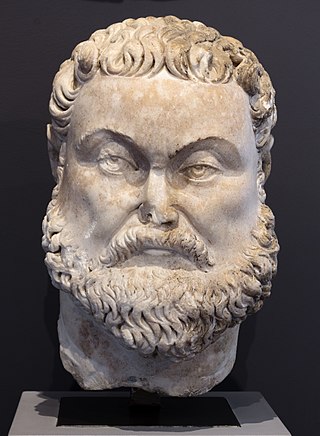
Maximian, nicknamed Herculius, was Roman emperor from 286 to 305. He was Caesar from 285 to 286, then Augustus from 286 to 305. He shared the latter title with his co-emperor and superior, Diocletian, whose political brain complemented Maximian's military brawn. Maximian established his residence at Trier but spent most of his time on campaign. In late 285, he suppressed rebels in Gaul known as the Bagaudae. From 285 to 288, he fought against Germanic tribes along the Rhine frontier. Together with Diocletian, he launched a scorched earth campaign deep into Alamannic territory in 288, refortifying the frontier.

Marcus Aurelius Valerius Maxentius was a Roman emperor, who reigned from 306 until his death in 312. Despite ruling in Italy and North Africa, and having the recognition of the Senate in Rome, he was not recognized as a legitimate emperor by his fellow emperors.
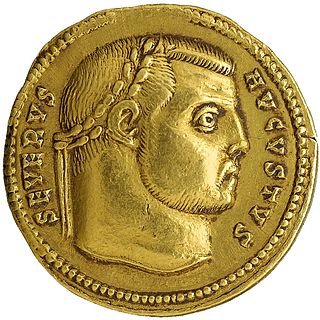
Flavius Valerius Severus, also called Severus II, was a Roman emperor from 306 to 307. After failing to besiege Rome, he fled to Ravenna. It is thought that he was killed there or executed near Rome.

The civil wars of the Tetrarchy were a series of conflicts between the co-emperors of the Roman Empire, starting from 306 AD with the usurpation of Maxentius and the defeat of Severus to the defeat of Licinius at the hands of Constantine I in 324 AD.

The Conference of Carnuntum was a military conference held on November 11, 308 in the city of Carnuntum, which at the time was located in the province of Pannonia Prima. It was convened by the senior emperor of the East (Augustus) Galerius as a way to settle the dispute over the title of Augustus of the West and, consequently, to cease the ongoing conflicts since the previous year when he, and before that Severus II', invaded the Italy of Maxentius (r306-312) and Maximian. Present at the conference were Diocletian, who had been retired since 305, and Maximian.

The Battle of Brescia was a confrontation that took place during the summer of 312, between the Roman emperors Constantine the Great and Maxentius in the town of Brescia, in northern Italy. Maxentius declared war on Constantine on the grounds that he wanted to avenge the death of his father Maximian, who had committed suicide after being defeated by him. Constantine would respond with a massive invasion of Italy.